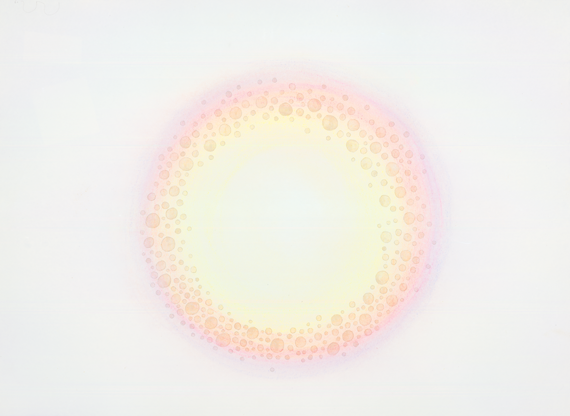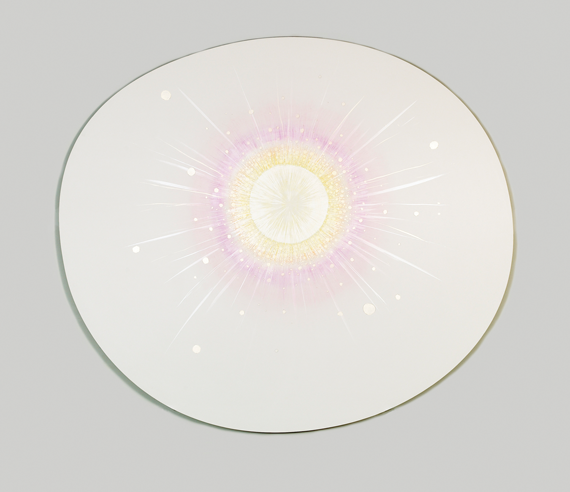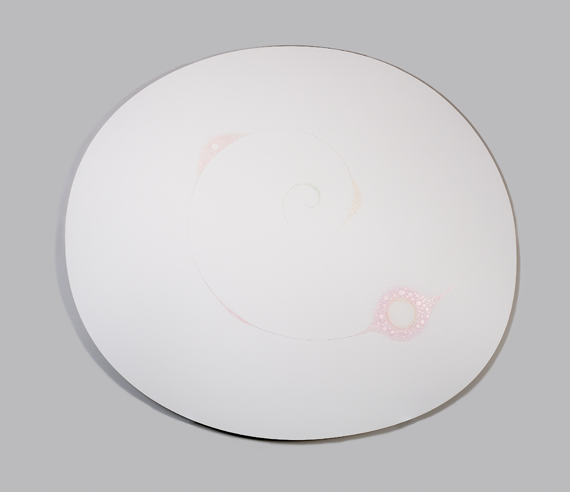
A commonplace of Buddhist history holds that wherever the dharma goes—from Mongolia to Thailand, from Afghanistan to Vietnam—it adapts to the local scene in a spirit of accommodation. But there is another way to explain the dharma’s ability to take root in very different societies. At crucial turning points, Buddhism has arrived in the nick of time to save its hosts from cultural paralysis. A good example comes from the Tang dynasty, where for centuries Buddhism was confined to urban enclaves. Then a catastrophe, the An Lushan rebellion, forced many ordinary Chinese to rethink their fundamental values. Crisis alone, it’s important to see, wasn’t enough to generate the necessary change; the Chinese had to use new tools supplied from outside the cultural mainstream—that is, by the dharma.
An exotic import from India, Buddhism brought an entirely new architecture of consciousness, a structure of metaphors, symbols, and myths that allowed the Chinese to experience their lives in ways unavailable before. As Americans, we find ourselves today in a similar dilemma, unable to respond to epic change because our old ways of thinking just won’t budge. What happened in China could happen here: Buddhism might offer us a route out of our impasse—if we don’t domesticate it so rapidly that its transformative elements get lost because they are challenging. For the Chinese in the 8th century, the problem was their fixation on the past, but for modern Americans, the problem is the very opposite: it’s our imprisonment by the future.
To understand this imprisonment, think back to 1979. In a speech announcing his run for the presidency, Ronald Reagan invoked an idea at the heart of our way of life. He told his audience that Americans, unlike people everywhere else, live in a constant state of anticipation because they know the future “will be a great place.” In the decades following this speech, much about the United States has changed, but in 2013 a very different president, Barack Obama, still chose “Faith in America’s Future” as the theme of his second inaugural address. This continuity was no accident: for centuries, the entire Western world—but especially the United States—has believed that history is leading us to some version of a heaven on earth, an article of faith that has its sources in messianic Judaism, Christian end-time theology, and Puritan ideas about predestination. What we call the “modern era” began when preparations for Christ’s return assumed a new and revolutionary form as technological control over the whole of Creation. Progress, innovation, development, growth—these became the new Commandments. And personal salvation was reimagined as the competitive pursuit of material success.
Yet more and more of us have begun to feel that the future we were promised has failed to arrive and probably never will. Not so long ago, our prophets of the future conjured up gleaming white cities and flying cars, saucer-shaped houses under bright blue skies, and robots happy to lift the weight of our drudgery. Inequality would be a thing of the past. But now, almost everywhere we look, we can see the return of the re-pressed. Our middle class is shrinking at an alarming rate. Almost a quarter of all children in the United States are growing up in poverty, while automation threatens to eliminate the kinds of jobs that might have given them a leg up. Asia gets applauded for its explosive growth, but hundreds of millions have been left behind, a permanent underclass not so different from those that seem to be emerging in Spain, Portugal, and Greece.
Even worse than the bad news itself is our failure of imagination. It might be true that the wheels of government always move at a frustrating pace, but the problem surely goes much deeper than that. It goes to the basic architecture of our minds, the structures of meaning and feeling that our culture provides. With the New Deal now a distant memory and socialism a dirty word, we have lost the power to imagine ourselves as moving forward together. And if we lose the future as our cherished ideal, the holiest of modern holies, what could possibly replace it? For many people, its demise invites resignation and despair, or the unapologetic selfishness of the lifeboat mentality. Unless we are willing to accept this fate, we will have to find an architecture to replace the one that has already failed us. No matter how many politicians try to revive a future whose time has passed, mainstream thinking is probably not the place to look. I believe another option exists, an option from outside. The core of the new architecture we need, if we are willing to try it out, might well be the Buddhist teaching of rebirth.

But rebirth is undoubtedly the third rail of Buddhism in the West. Virtually all the great teachers we admire from Buddhist tradition—Dharmakirti, Huineng, Dogen, Tsong-khapa, and of course the Buddha himself—accepted its reality. For many of us, though, it’s a profound embarrassment, the one relic of the past that shadows a religion otherwise resonant with quantum physics, cutting-edge neuroscience, and modern rationality. Yet rebirth could be viewed as something other than a failed attempt at scientific truth. We might see it as a myth like the ones explored by Mircea Eliade, Joseph Campbell, and Karen Armstrong. These thinkers make a distinction between logos—representing rational thought and empirical facts—and mythos, which furnishes the paradigms that give raw experience the structures we need before we can start to think logically. As mythos, rebirth would surely have a place among the primal stories that, in Armstrong’s words, “reflect and shape our lives.”
Whether or not we feel ready to subscribe to the logos/mythos distinction, we should recall the prajnaparamita [perfection of wisdom] movement’s claim that no representation of reality can be unconditioned, all inclusive, or unmediated. All knowledge is mythos from this point of view—creative and only relatively true—while the ultimate reality is described as empty like the cloudless sky. When we evaluate a claim about the world, we modern people tend to ask, “Does it correspond to the facts?” But from the prajnaparamita point of view, the facts are determined by the questions we raise. Instead of searching for objectivity, we should judge beliefs by their results: What actions will follow if we think this way? Can this idea make us more aware? Will we become more compassionate, or less understanding?
We find ourselves today unable to respond to epic change because our old ways of thinking just won’t budge.
The results of the great myth of our times, the myth of the future, have become as obvious as they could be. The future, we should have learned by now, is less about getting ahead than it is about me getting ahead ofyou. Even when the aim is only to improve ourselves, we will naturally look down on everyone like the person we used to be. We will feel contempt for the unimproved because we see our old selves in the same light. But the tyranny of “better than” is the target of prajnaparamita, which insists there is nothing to attain. Nothing can be added to, or taken from, the inherent perfection of things as they are now. According to these teachings, wisdom doesn’t come when we’ve grasped the ladder’s highest rung but when, looking down on our illusions, we no longer need a ladder. In our society today, rebirth could operate as a counter-myth, reminding us that whatever we achieve—an Oscar, the Nobel Prize, a place on the Forbes Global 2000 list—our next life could take us back to square one, shoulder to shoulder with those we left behind. To desire such an outcome for ourselves while pursuing complete enlightenment is the bodhisattva’s way.
In Zen, the tradition I know best, perhaps the most important text that deals with rebirth is the koan called “Hyakujo’s Fox.” With its roots in Yogacara psychology, which emphasizes the unconscious, Zen has a soft spot for stories like this, saturated with Chinese magic and myth. The text explains that whenever Hyakujo (Chin., Baizhang) prepares to deliver a dharma talk, an unknown old man enters the teaching hall at the end of the long queue of monks, taking his seat in the back and listening to the discourse unobtrusively. Then, as quietly as he arrives, he simply disappears.
Time after time when Hyakujo looks down from the rostrum he can see the old man entering and sneaking off, but one day the master intercepts the stranger before he gets away.
Blocking his escape route, Hyakujo asks, “Who is this standing before me?”
“I am not really a human being,” the old man replies. “I’m actually a fox in human form, and a fox I have been for my last 500 lives.” The fox explains that long ago, in an age presided over by a prior buddha, he had been the celebrated abbot of a temple on the very site of Hyakujo’s present monastery. One day a student had approached him to ask if an enlightened person would still remain subject to the karmic law of cause and effect or if he would get free once and for all. Confidently, the abbot declared, “He gets free.” But as it turned out, this answer was wrong and retribution followed. “Since then,” the old man laments to Hyakujo, “I have been doomed to undergo 500 rebirths as a fox. I beg you to tell me something that will set me free.”
When we look carefully at the fox, we can recognize a version of ourselves. If we’re Buddhists, we probably want the ultimate in wonderful futures—complete enlightenment, maybe even buddhahood—and reaching that condition means getting away scot-free from all kinds of suffering. But more often than we might care to admit, the enlightenment we seek is an enlightenment-for-me, a liberation that leaves everybody else still trapped on the wheel of birth and death, a wheel our own actions have helped to turn. China at the end of the Tang dynasty and America today are unalike in countless ways, but the abbot’s wish to leave it all behind is much the same as ours. Our modern worldly equivalent might be an Ivy League degree, a gilt-edge career, an expensive home and vacations in Chiang Mai—all meant to signal that we never again will have to scrimp to make the rent, or ride the bus because we can’t afford a car, or mollify an angry boss. “I’ve escaped,” our success will proclaim. “I’ve made it to the future of my dreams.” Eight centuries after the koan was composed, it can take us by surprise because students of Zen still get caught in the trap the story sets for them.
Ironically, the fox’s wish to escape locks him into a cycle of rebirths, a hell of repetition not so different from the one in which we find ourselves. Our consumerism heaps up mountains of debt, yet we continue to borrow and to spend, consciously aware it’s unsustainable but still unconsciously convinced that we can see an exit sign up ahead. The koan is designed to help us recognize that the only way to avoid a fox rebirth is to accept whatever happens as our personal responsibility. When the fox pleads with Hyakujo to tell him how he should have answered when he was asked about getting free, Hyakujo reminds him of his embeddedness in the here and now. “The person of enlightenment,” Hyakujo says, “does not ignore causation.”
After this exchange the fox declares that he has finally been liberated from his cycle of rebirths. Now he can die peacefully, and he takes his leave. Shortly after, Hyakujo orders a priest’s funeral to be held later the same day, much to the consternation of his monks, who protest that no one at the temple has died. Their doubts and confusion only grow worse when Hyakujo leads them through the woods, where he finds the lifeless body of a fox. Hearing the story now, we might think the fox has indeed gotten free from birth and death just as he had wanted all along, but actually his liberation only comes after he sees the impossibility of his ever escaping: he won’t come back as a fox next time but he will still come back. Everybody does, forever.

How can this be possible? Isn’t the point of Buddhism to break out of the cycle of rebirths? According to the prajnaparamita view, however, neither birth nor death actually exists—except as “skillful means,” stories told to help us liberate ourselves. As the bodhisattva Avalokiteshvara declares in the Heart Sutra, “all phenomena are marked by emptiness; they do not appear or disappear, are not tainted or pure, do not increase or decrease. There is really . . . no ignorance and no extinction of it . . . no old age and death and no extinction of them.” In the Zen tradition, the Four Great Vows of Huineng make the same point in a slightly different way:
Sentient beings are numberless; I vow to save them all.
Desires are inexhaustible; I vow to end them all.
The dharma gates are infinite; I vow to enter them all.
The buddha way is unexcelled; I vow to attain it completely.
If sentient beings really are numberless, saving them will take forever. If the dharma gates are infinite, we will need an endless number of lives to pass through every one. Instead of trying to escape rebirth, the man or woman of Zen should embrace everything as the Buddha Way, and everybody’s problems as their own.
This is the fox’s discovery. What has changed is how he sees himself: no longer as an “isolated individual,” in the words of the Diamond Sutra, but as one part of a living whole, which will continue after his death, his most recent change of form. If this insight surprises us, we are not alone: remember the grumbling of Hyakujo’s monks when they are told to prepare the funeral. But this reaction only shows how thoroughly they remain trapped in the foxlike way of seeing: unconsciously they still regard themselves as separate from everything else, and they still believe the future can provide a personal, a separate, salvation. What the fox learns, and what the monks have yet to understand, is that rebirth is unstoppable because we have never been separate, even momentarily. As the Japanese Zen master Dogen wrote, “In the entire universe not a single thing is outside of buddhanature”—not even, as the koan gradually makes clear, a fox found dead on a mountainside.
To this insight, however, Dogen adds an important complication. After telling us that nothing falls outside of buddha-nature, he goes on to deny the possibility of any “second existence other than this universe here and now.” This one sentence seems to put an end to the teaching of rebirth along with a heaven or a hell. No “second existence” appears to mean “no life after this one.” Yet Dogen’s writings clearly indicate his acceptance of the standard view. There ceases to be a contradiction, though, once we shift perspective from the “I” to the “we.” However many times we may experience rebirth, none of them can ever free us from dependent co-arising (pratityasamutpada): we create and recreate each other constantly in ways that make firm boundaries between us impossible to preserve. You are becoming me and I’m becoming you, unstoppably and inescapably, all the time. And this might just be the medicine we need in 21st-century America.
Like India in the Buddha’s time, and like China in the Tang, we have our version of the ruling class—what is sometimes called the 1 percent—and they love to remind us that their power and wealth are justified by their hard work, intelligence, and creativity, along with a little favored treatment from heaven. In a society that holds out success as a possibility for everyone even though resources are limited, the only way to disguise the privilege of the few is by promoting competition as a cultural ideal. Competition, though, is a game very few can win, and so it is hardly surprising that many of us suffer from a sense of having failed to reach our full potential by becoming the next president, the next Angelina Jolie, or the next Bill Gates. From our first day in school or our first time in a sports arena or a concert hall, we are taught to measure our worth against the achievements of others. That’s what grades are for, as well as all the trophies, prizes, scholarships, and awards that some of us will win or lose throughout our lives.
Buddhism may seem to reinforce this competitive mentality. In meditation practice, as in Wall Street finance, some people win big, while others never see the payoff they expected even though they’ve invested every cent. True, the Buddha taught that each human being is capable of waking up, but the reality can seem less than fair, because a single lifetime is simply too brief to reach the goal of total liberation. Even the Buddha is supposed to have required countless prior lives of preparation. One way to explain why rebirth became so important to Buddhism is that it gave everyone a second chance—in fact, an endless series of chances. Combined with the bodhisattva ideal, which held that the dharmic winners will remain behind until the rest of us win, too, the teaching of rebirth helped to germinate a spirit of radical equality. This spirit expressed itself most powerfully in the Lotus and Flower Ornament sutras, both composed in the 1st to 4th centuries of the Common Era. The Lotus Sutra taught with utter confidence that everyone is on the way to buddhahood and will arrive there in due time. The Flower Ornament stridently proclaimed the absolute value of every life:
The Buddha is vast, extending
throughout the cosmos,
Regarding all sentient beings equally,
Universally responding to all hearts, he
opens the door of wonder,
Causing them to enter the
inconceivable pure truth.
This is an image of a universe diametrically opposed to the one imagined by the Tang’s mandarins, with their fear of losing status. It’s also an image of the universe radically different from the one inculcated by our culture, with its miniscule elite of superbillionaires and its multitude of people hanging on, a check or two away from destitution.

No one is better than anyone else—that’s a fundamental lesson of rebirth in the Mahayana, the “great vehicle” designed to transport all passengers to enlightenment. Another lesson is that getting there means traveling together in coach, with all the usual inconveniences. In Suhrllekha, the Letter to a Friend, a verse treatise on awakening attributed to Nagarjuna, the author reminds us that even the gods cannot escape from karmically conditioned ups and downs. For a while, Tushita Heaven is a Technicolor paradise:
Bejeweled bathing pools, always
brimming with fragrant pure
water,
Are ringed and overhung with all
varieties of marvelous blossoms. . . .
The gods roam about, sporting
playfully. . . .
Such joys and sensual bliss cannot
even be described
[But as their] merit runs out, they
come to an end, and [the] five signs
of ruin appear.
They are then beset by suffering
exceeding their earlier pleasures.
–trans. Bhikshu Dharmamitra
It might be reassuring to think of the cycle of rebirth as a competition we can win, but Nagarjuna would disagree. The gods don’t fall from heaven because of their misdeeds or mistakes. Instead, their supply of merit simply runs out and then down they go. At first, this idea might seem to be the ultimate in negative thinking, but Nagarjuna wants to convince us that our liberation doesn’t depend on conditions that are typically beyond control, even the control of the gods. We don’t have to care about conditions, he insists, because waking up is a possibility anywhere at any time once we break through the shell of an isolated self.
This idea sounds appealing, true enough, but what might it mean in practice? Are we prepared to see the life of a homeless man as equal in value to a billionaire’s, or equal to the life of a great novelist or a scientist who has found a cure for some kind of cancer? Speaking only for myself, I would much prefer to be among these “winners,” and I feel terror when I contemplate ending up on the street. But Nagarjuna says that if rebirth is real, then sooner or later every one of us will experience the homeless man’s life, not once but again and again. Liberation doesn’t mean moving up; it means developing a mind of absolute equality.
The dream of progress is just another way of trying to be better than everyone else, but the Buddha taught we will always remain equals in the most basic sense: none of us—as isolated selves—will ever manage to escape from sickness, old age, and death. Denying such an elemental truth can only make us strangers to ourselves, and to everybody else. If we recoil from this humanness, then we will probably close our eyes to the humanness of other people as well, especially their experience of suffering. And this insight points us to what may be the most import aspect of rebirth. Only by accepting the suffering of others as our own responsibility can we bring ourselves back from the realm of the preta, the “hungry ghosts” trapped between the living and dead by their unmet needs—needs they can only meet by taking care of others first. When we acknowledge that suffering is our common ground, we can sometimes feel as though everyone we see has been our mother, father, daughter, or son in a previous incarnation. Rebirth might seem to feed our egos, promising that we will come back again, but all our good deeds this time around are going to benefit future human beings who won’t even know our names. We ourselves won’t ever know who we were. Needless to say, this line of thinking conflicts with our competitive, future-obsessed culture. Rebirth as a myth or metaphor, which is part of a larger architecture of the mind, asks us to resist the pressure to believe that the future will deliver or redeem us. It reminds us that we are bound to everyone, and that by helping others we discover an unacknowledged, undervalued part of ourselves. A teaching that has caused so much embarrassment to modern, skeptical Westerners might turn out to be the one we most need to hear if we want to change the way we live now.